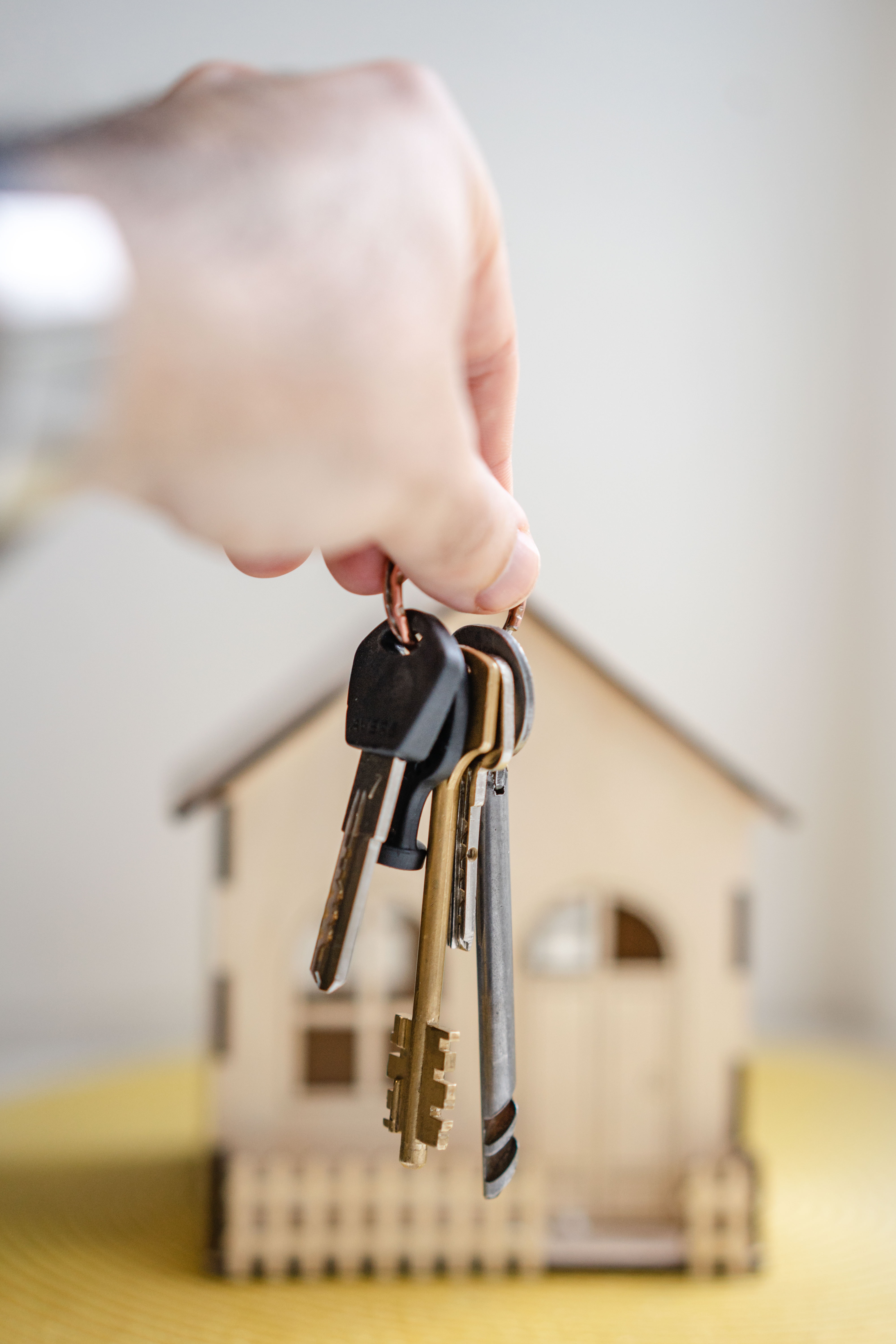How to Prepare Your Home to be a Better Home for a Quick and Profitable Sale
It's not as easy as it sounds to sell a home. It is way more than just putting up a “for sale” sign in the front yard and holding an open house for buyers. There are lots of stages of preparation you need to take into consideration before you put your home on the market for sale.
You certainly don’t want a cheap price for your home, and you don’t want to have to wait an eternity before you get an offer for your home, do you?
You should never underestimate the importance of a first impression! You need to prepare a home for sale and put some effort into it if you want to sell it for the best price.
Preparing Your Home for Sale
At first, you might be wondering: “How long will it take me to prepare my house for sale?”
Spending an average of 3 weeks preparing your home for sale is very normal. That’s why always be prepared beforehand and never wait until the last minute. Because having to sell your house at the last minute will get you a very cheap offer.
This guide will help you stay within the bounds of a 3-week timeline.
Now, If you are in a hurry and don’t have that 3-week time margin, try at least to follow the first few tips before you immediately sell your home. Do not stress and add more anxiety if you’re short on time because there’s no room for error. Instead of focusing on the "how long"- will it take, stay focused on the "how to".

Best Tips for Effectively Preparing Your Home for a Quick & Profitable Sale
We’ve pulled together our top tips to help you prepare your home and increase its value before putting it on the market.
#1 Plan your Home Staging(1-2 days)
Staging is very essential. Before you begin a long list of house repairs and remodeling, consult with a real estate agent to determine what is and isn't worth the effort. Homeowners usually have at least one thing that they don't like about their homes.; a few imperfections, like a slightly leaning fence or a scratch on the cooktop. An agent is best placed to tell you which of those fixes are likely to be noticed by buyers and which you can ignore.
#2 Clear out the Inside Clutter (5-6 days)
It is true, real estate experts say that empty homes don’t sell as well as furnished ones do. However, cluttered homes are really a turn-off when it comes to purchasing a home. They give the impression of chaos and filthiness.
If the space is cluttered, it gives buyers the sense that your home doesn’t have enough space whereas if everything is organized, it creates the impression that you take good care of the space. The key is to create a space that is welcoming and not cluttered and that’s an important psychological advantage.
If you’re like most people, you stuff all of your loose ends into your bedroom or other rooms where they’re out of sight, out of mind. It's because of this habit that you'll have quite a few boxes to deal with.
It is almost time to pack up all of the things in the house or add them to the donation pile. But of course, that is easier said than done.
How to start de-cluttering?
- Remove the clutter. Start by collecting all the personal stuff and items that you need. This is where you mostly search in your bedroom and your toilet. Don’t forget to check all the cabinets and closets. If you’re in doubt about whether to keep an item or leave it, it means it is ready to be discarded. Ask yourself: “Do I love it? Will I miss it? Do I really need it? Do I currently use it? Does it have personal value?" Pick only your favorite items to pack. Indeed, it is a toss or keep decisions you’ll be taking throughout the whole process of this step.
This is a good time to pack up all the family photographs you’ve displayed on the fridge, the papers you piled in the TV drawers, and the stuff and books on the coffee table.
Buyers may fall in love with that gorgeous mirror in your bathroom, and you don’t want to lose the sale over it so remove anything you don’t want to negotiate.
- Once you pack the items you want to take with you, repeat the same process, collecting the items you want to donate.
- Retain only those items you no longer need and that you think the new owner might use. Leave a few decorative items to keep the packed-up bedrooms from looking too bare.
- Remove the furniture that has seen enough days. You don’t want to keep worn and unpleasant furniture in the house. This includes carpets, curtains, chairs, tables, sofas, etc. This is where you will be attacking the living room.
- In the kitchen, pack the appliance you want and throw away the used appliances you don’t need. Don’t keep used appliances. Potential buyers will open every drawer and cabinet. Take some time to clean out your kitchen cabinets(and bathroom cabinets).
- Deep Clean: Clean all the rooms of the house and remove the dirt from the items you chose to leave, don’t forget to close the toilet lids and empty the trash cans. Use some air freshener to keep it fresh. Make sure every surface is cleaned and every window is shining.
It is important to keep in mind that you’ll need to keep your house clean as long as it’s on the market. You want to be able to exhibit it anytime a potential buyer phones your real estate agent.
And the best part is: Cost? Free!
#3 Do Some Small Repairs (9-10 days)
You sure don’t need to renovate your house but you should definitely take care of those little repair jobs. If the buyer inspects too many repairs that need to be done, he will offer a reduced price. The overall condition of your home should be taken care of in order to prevent buyers from wondering about it.
- Fill the holes in the walls and paint the rooms. Neutralize the space for a better quick and profitable sale. If your rooms are orange or purple, consider repainting them in a neutral color. Your goal is to have the buyers see the room, not the paint. Colored rooms may not appeal to certain buyers.
- Repair what is visibly broken. Isn't it that a squeaky closet door? Fix it. What about that cabinet door that won't close properly? Adjust it.
- Erase any pet damage.
- Update the kitchen. It doesn't need to be expensive. A simple paint job, an update to the hardware, or a new countertop or appliance might suffice.
- Have unsightly sinks and tubs refinished rather than replace them
- Make the necessary repairs to your ceilings and floorings. Remove worn carpeting.
- Repair plumbing, electrical, and water and air conditioning systems so they work as intended.
You don’t have to invest a huge amount in repairing these fixes. You can do it yourself or ask your friends or family to lend a helping hand. Make only essential changes - you don't want to eat into your profits by overspending on home improvements.
#4 Assess the Outside Appeal (3-4 days)
After spending two weeks pent up inside packing, it's time to get some fresh air.
Your house may be the best one in the neighborhood, but how will one ever know if the outside looks horrible? Almost all of us have driven past creepy-looking houses with overgrown landscaping and peeling paint and got that scary feeling. Don't be that house that everyone runs away from!
There is no need to spend a lot of money on this first stage. You just want to make the exterior of your home as attractive as possible without financial undertaking.
So, consider the following:
- Power wash the outside surfaces, including basement, car garage, garden, stairs, playground, yard, etc. Cleaning these outside spaces out will get you into the moving-out mindset, making it easier to purge and declutter when you start packing. Your outside storage areas are probably filled with unwanted or forgotten items. Using this strategy will result in you not having to worry about hiding your boxes during last-minute showings.
- Mow the lawn and weed.
- Trim all the hedges and greenery. Remove any hedge that blocks the view of your home from the street.
- Brighten your curb appeal with some flower or green pots near the front door.
- Ensure that the outside lighting is functioning. You never know if the buyers pass by for inspection at night.
- Examine the exterior of your home for any visible damage or deterioration to your siding, windows, gutters, and roof.
- Clear the yard of debris, tree leaves, and snow during the cooler seasons of fall and winter.
- Take care of any additional landscaping issues that may throw off potential buyers.
Don’t stop until you’re satisfied by the appearance and attracted by your own house!
#5 Be Flexible
Selling your home sometimes has less to do with the physical property and more to do with how you engage with potential buyers. The way you interact, connect with your buyers, and present your home are the factors that will sell it for a high price.

Final Thoughts
For sellers who want to get the most out of their house sale, this includes doing some thorough home prep and staging while not spending so much that they lose money on the sale. We know how overwhelming it can be. Selling your present home and moving into a new one can be a difficult experience. However, if you approach the process project by project, you will have a better chance of a low-stress shift. Follow these guide’s stages and you will sell your home in no time.
If you're not up for doing any of these tips, selling your house to a cash buyer is always an option for an instant sale. So make the right choices from the start!
Our Blog




